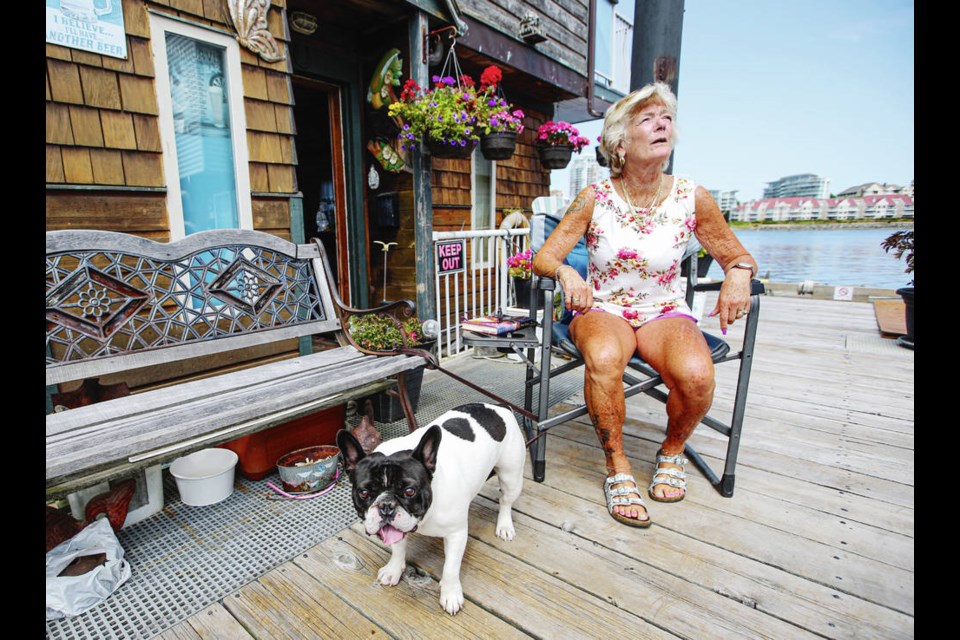With tourist numbers starting to pick up, residents of the float home community at Fisherman’s Wharf are apprehensive of what the future brings when traffic from cruise ships returns.
The Greater Victoria Harbour Authority, which manages the property, installed temporary barriers in 2020, which has successfully restricted unfettered access to the residential zone. The barriers will be up for the remainder of the summer until a more permanent solution is found.
“We support our local businesses — but not for the crowds of people who cross our personal boundaries 40 times a day,” said Natalie Munro, who moved into the community with partner Lisa Green in 2017.
Instead of the free-for-all of past years, she suggests there could be land or water-based guided tours as alternatives.
“There should be lots of ways for people to appreciate the uniqueness of the community without being invasive.”
The wharf is a popular destination for tourists, with its mixture of commercial businesses — from kayak rentals to eating establishments.
The three docks where float homes are moored are located near the businesses, and when there were no restrictions on access, they made for a popular stroll for people enjoying the eclectic collection of residences.
The people living in the 33 float homes are part of a tight-knit community and don’t mind talking with visitors, said Melanie Sibbitt, chair of the Fisherman’s Wharf community association.
“I have met people who have been respectfully curious and invited them into my home,” Sibbitt said. “The community really enjoys the visitors and loves talking and answering questions. We know we live in a tourist zone and we understand people’s curiosity about our homes.”
But the area’s popularity has led to an exponential growth in visitors who want to inspect and take pictures of the colourful, funky homes, and some don’t respect the privacy of the occupants, they say.
“Some people think this is all make-believe,” said Green. “They think that it was just built for tourists.”
Common complaints by residents include strangers opening their front doors and walking into their homes, peering into windows and boarding homes to get a better vantage point for pictures.
“I think there is a misconception that the docks are public property — they are not,” said Green. “The docks are on private property and their use is part of what we pay for in our monthly moorage fees.”
The sound made by people walking on the wooden boards can also lead to complaints, as the noise carries on the water.
But the biggest complaint is when members of the public step off the dock and onto the skirt of the floating home.
“When they step aboard, the whole home moves,” said Sibbitt, who is from Toronto.
“The unexpected movement can be disruptive to the home’s occupant and a liability to the homeowner if the person falls into the water.”
Because the float homes have no front or back yard, the docks are the community’s gathering place. But with more foot traffic, many residents increasingly felt trapped in their own homes.
“We love talking to visitors — but we also needed some downtime,” said Sibbitt.
Joanne Wilkinson, who has lived at Fisherman’s Wharf for 10 years with her partner, Stephan, said for the most part, people have abided by the rules over the years.
“We would just like a bit more respect.”



